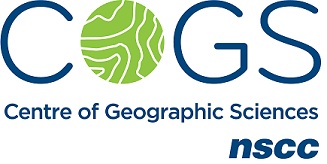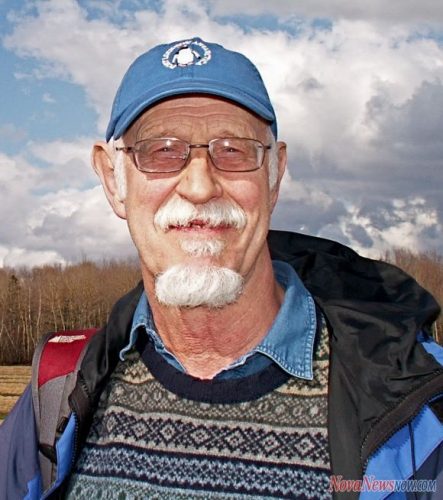When Jonathan Murphy mentioned to me ‘the myth of COGS’ as a topic of conversation in Ottawa I agreed to research the subject.
First of all one must consider the term “myth” and one definition forwarded to me by Marlin Gould that I have included is “a story about superhuman beings of an earlier age taken by preliterate society to be a true account”.
While Jonathan was interested in the myth, in order to substantiate it, we must describe reality. And it should be said, that every educational institution has its own ‘myths’ or stories. The stories from COGS involve interactions with local folk in a rural Nova Scotia community, late nights hiding in washrooms and under sinks, and late night recreation in the empty building. There are also the stories of speed at which people got multiple job offers before completion of the program and opportunities. To put all this in context, many of these myths relate to activities that occurred before the availability of the Internet, and students were indeed finished when they left the building each night. There was no access to the network once you left the building. But did these myths continue to occur with new graduates?
To get to the bottom of the myth, my approach was three fold:
- If the stories about student life at COGS were true, then one of the obvious sources for validation would be the maintenance staff. I arranged to interview Gary Gaul on staff at Lawrencetown since 1984 and known to many as one of the late-night janitors.
- What was the perspective of the instructors ? I assembled a brains trust from the 1980’s, representing Computer programs: Bill Power, Marlin Gould, Roger Mosher, David Colville. Selected because each of them had been a student at NSLSI before the changeover to COGS. What did COGS represent to them, as students and as instructors? Were the myths real? ? What has happened since the days of the intensive fifty-week diploma programs?
- Finally, I approached Val Thomas. She was a student in the late 90’s, known to me because of our collaboration on the Masters program in Indonesia. Subsequently, she started an academic career, and is presently at Virginia Tech. Was the myth valid in the later 90’s ?
By having these conversations, my hope was to gain insight into the process of teaching technical subjects. My sense is that some of the lessons we learned at COGS remain relevant today.
The preliminary results of my quest are as follows:
- the view from maintenance
When you operate an educational institution in a rural setting, and you encourage intensive learning then there is a high probability that students will put in long hours to master the technical skills. There are few local distractions and few students had cars so certainly in the 1980’s, students would attempt to hide in the building after 11:00 pm closing time so that they could return to their computer terminals for long late night sessions. Some were not averse to take basketball breaks. Gary can recall numerous tricks that were used to remain overnight. Different strategies tended to be passed on from year to year and each year there would be new surprises. While students were caught on occasion, there seemed to be little disciplinary action and no vandalism occurred. Many students became friends with the maintenance staff some keeping in contact with the staff long after they left the campus.
Roger Mosher, when a student, recalls being unable to sleep on the couch in the cafeteria because the Remote Sensing students were still working in the DIPIX room at 1 am in the morning.
- the view from the instructors
First a couple of context observations, in the 1980’s leading up to the naming of COGS, the instructors were creating new programs almost every year: Scientific Computer Programming (SCP) to Business Computer Programming to Computer Graphics to GIS. Many of the students were adult learners who honed their programming skills in the intensive, three semester, fifty week SCP program. They all completed co-operative projects with industry or government in their final semester. They all passed a computer programming aptitude test to enter the program. Many students were working on projects with specialization in application software development, focused on Geographic Information Systems (GIS) and Image Analysis Systems (IAS). We developed strong ties to Esri and Esri Canada for GIS, and DIPIX, PCI for Image Analysis.
The learning environment was one of colleagues (students and instructors) solving problems together. As the instructors understood the functionality and application of these systems, they shared their knowledge with the students, and vice versa. Mechanisms were developed for instructors to keep on the leading edge of the specialist technology. Bill Power tells the story of the day he received a phone call from Florida because a client of the PRIME Medusa system had been given his name as a technical resource. Where was technical support? He had supervised a co-op project with a couple of students on this system.
In the case of GIS, as Esri Canada sold systems, the customer would hire a COGS graduate to provide technical support and administration of the system. That is the real basis of the ‘myth of COGS’. It was a unique learning environment within a semi-autonomous learning institution with a direct pipeline to available jobs.
- the view from a student
There were a few notable aspects of COGS in the 90’s that fed into its remarkable success as an educational experience. The first was the isolated location in the Annapolis Valley, in the very small town of Lawrencetown, Nova Scotia. This was coupled with a unique concentration of highly qualified and enthusiastic instructional faculty who garnered the respect and admiration of the cohort of students. Very quickly, we realized we were part of something special. At a time when the job prospects for university graduates seemed discouraging, the COGs cohort had a sense of optimism and confidence that new rewarding careers were just beyond the horizon. This led to a sense of camaraderie amongst the students, and the motivation to put extra effort into the tasks put before us. The many success stories of the students from prior years fueled our passion to absorb as much remote sensing and GIS knowledge as we could from our instructors during our brief stay with them. Finally, the style of instruction was unlike anything most of us had ever been exposed to. This was not a prepackaged program with canned solutions and straight-forward learning objectives. Rather, every student in the program got their hands dirty with real geospatial problems and data. In many cases, solutions were not evident. Rather than showing us a solution, the instructors guided us with keen observations and sage advice – and we found a solution together. This approach trained students to troubleshoot, and led to a sense of confidence amongst the students that we could handle any technical difficulty we were likely to encounter in the ‘real world’. In my career, I have not encountered the equivalent of the COGs program, but its model has much to offer.
Final Comment
As the SCP instructors gathered in Annapolis Royal, we were able to identify some of the changes over the last twenty five years that may have influenced the type of myths that come from new graduates:
- no more aptitude tests, no more federal grants to students
- less focus on one or two leading edge specialist technologies
- change from three semester to two semester programs
- less opportunity for colleague environment
- no full semester co-operative projects
- more bureaucratic overhead
- less interaction with general staff
- Internet access from home
- students with cars
- separation of IT programs (Middleton) from Application programs (GIS,RS) (Lawrencetown)
Could this model, invented in the 1980’s, be replicated today? Regardless of the changes in the technology, education can still be delivered in an holistic way, by maintaining numerous relationships with all the related communities of interest: science, business, government and citizens. The basis parameters are a vision, the flexibility to allow creativity, support for leading edge technical instructors, and an atmosphere of colleagues – students, instructors, maintenance and administration, working together.
The ‘myth of COGS’ may still exist in Ottawa or Redlands, and perhaps elsewhere, because we have been supplying graduates to business and government agencies for the last thirty years. My group of ‘myth busters’ i.e. the four instructors remain engaged in different ways with the potential of these technologies and their role in society. This speaks to a philosophy of life long learning.
‘Myth busters’ is a term coined by Edward Wedler. Edward was also part of the 1980’s instructor team at COGS. He was teaching Remote Sensing, along with Dr. Manou Akhavi.





Be the first to comment